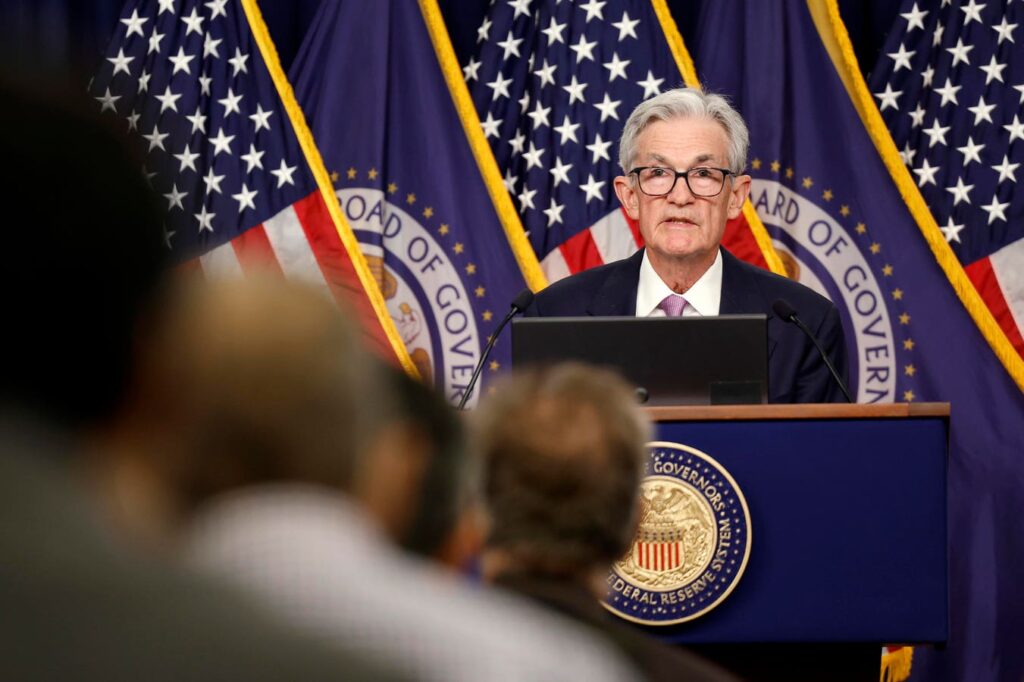On September 18, 2024, Federal Reserve Chairman Jerome Powell announced a significant monetary policy shift during a press conference following the Federal Open Market Committee (FOMC) meeting. The FOMC cut the benchmark interest rate by 50 basis points, bringing it down to a new target range of 4.75%-5%. This decision reflects the committee’s ongoing adjustment in monetary policy to respond to prevailing economic conditions, with another interest rate decision anticipated on December 18, 2024. Current market sentiment, tracked by the CME FedWatch tool, indicates that a rate cut is more likely than not, underscoring a gradual shift toward a more accommodative stance as the economy adjusts to recent trends.
The FOMC’s overall trajectory points toward a gradual reduction in interest rates, contingent upon forthcoming economic data. Projections indicate that rates are expected to stabilize around the current range of 4.5%-4.75% by the end of 2024. While individual policymaker estimates exhibit considerable variance, both holding rates steady and implementing further cuts remain plausible options. Powell emphasized that the pace of monetary easing will be contingent upon data trends, acknowledging the uncertainty inherent in the current economic landscape.
Jerome Powell’s recent remarks highlight the Fed’s commitment to reaching its inflation target of 2%, despite encountering persistent fluctuations in indicators. Speaking in Dallas on November 14, Powell acknowledged that inflation had edged up to 2.6% annually, diverging from the disinflationary trend seen since March 2024. He underscored the necessity of maintaining a balanced labor market while reaffirming a commitment to achieving the long-term inflation goal, suggesting that inflation would likely decline but may do so on a variable path due to external economic influences.
In this context, Powell remarked on the delicate balance the Fed must strike when adjusting policy. He cautioned that excessive hastening in reducing policy restraint could jeopardize progress on inflation control, while excessive caution could dampen economic growth and employment levels. The Fed is actively navigating towards a more neutral policy rate, but the course remains flexible and responsive to evolving economic indicators.
Transportation costs and housing markets emerge as critical factors influencing inflation in the upcoming year, particularly regarding shelter costs, which constitute a substantial component of the Consumer Price Index (CPI). Comprising approximately 37% of the total index, any fluctuations in shelter prices will significantly impact overall inflation metrics. Recent data indicates that shelter costs increased at a 4.9% annual rate through October 2024, which, if moderated, could help the Fed achieve its inflation target. However, shelter costs have not declined as rapidly as anticipated, with apartment rental costs showing only slow downward trends despite varying home prices.
Looking ahead, economic performance will play a pivotal role in the FOMC’s December decision regarding interest rates. While there is a slight inclination toward further cuts at this meeting, this will largely depend on upcoming economic data, including November’s CPI and employment reports. Continuing the trend of policy easing initiated in September and November could be plausible, yet the decision remains complex and will be closely tied to the latest economic indicators in the coming weeks, illustrating the Fed’s adaptive and data-driven approach in navigating current economic challenges.

